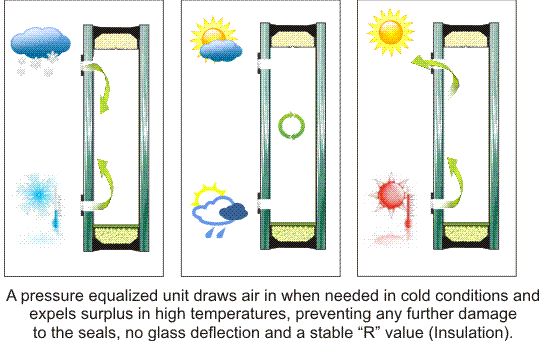|

The re-engineering of the unit is done in four parts, and all parts
must be done for the process to work.
The Process:
Stage 1: Drill Unit. Two small holes (6mm) are drilled in the unit either in the glass or
through the side spacer bars, the holes allow access to the internal air space
and glass surfaces for stage two and three, special vents will be fitted over the holes.
Stage 2: Coat Glass. The unit is then injected with a special Drying Agent that removes the moisture
from the glass surfaces and also coats the glass with an anti-fog nano polymer,
it is this unique and special coating that prevents the moisture in the air
that passes through the unit condensing on the internal glass surfaces.
Stage 3: Seal Unit. A special sealer is then injected into the unit to create a seal across
the bottom of the unit, this seal prevents moisture ingress from the bottom
rebate of the window and also prevents moisture building up in the bottom
spacer bar of the unit.
Stage 4: Vent. Special vents are fitted over the holes drilled in stage one, the vents
control the amount of air that enters the unit and prevents water droplets from
driving rain or window cleaning from entering the unit, the vents also stop
insects, dust etc.
The unit is then left to vent any trapped moisture out of the unit, this we call
the "drying out" period. The time it takes to dry out the unit varies
from unit to unit and from area to area and is dependent on how much water is
trapped in the unit, the size of the unit and the time of the year. Some units
will clear within a few hours, some can take a few days and some have been
known to take up to 12 weeks. During the drying out process water may be seen on the glass. After all the surplus moisture has been expelled, the unit will remain totally clear for many years. Video Demo: http://www.youtube.com/watch?v=du-Fu2V4oVo&feature=youtu.be Other industries have suffered from sealed unit construction failure and have solved the problem by similar techniques used by ourselves, Example: Car headlamps were manufactured using sealed unit construction, after a few years the sealed unit would fail and water would get trapped in the unit causing condensation to form on the glass (MOT Failure), rather than trying to manufacture a sealed unit that would not fail (impossible) they re-engineered the product, the headlamps are now manufactured with a vent or breather tape that allows air into the unit and treat the internal glass and lens surfaces with an anti-fog coating
|